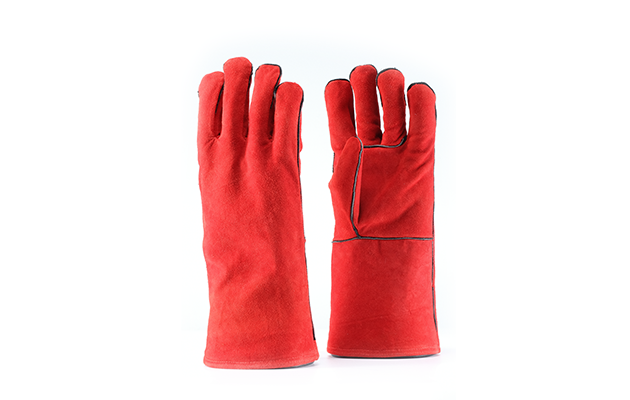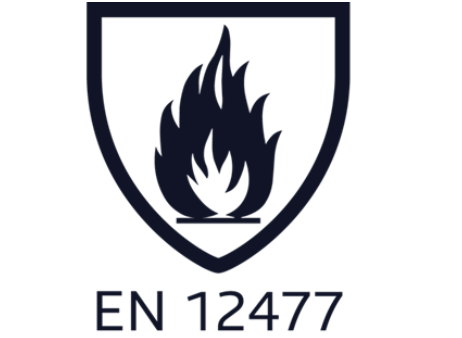
Welding is a demanding job that involves high temperatures, sparks, and potential hazards. Without the right protective gear, you risk severe burns or injuries. Are you using the right gloves for the job?
Welders should wear specialized welding gloves made of heat-resistant materials like leather to protect against high temperatures, sparks, and molten metal.
Let me guide you through the different types of welding gloves, their standards, and proper PPE to ensure safety and efficiency while welding.
What type of gloves should be worn for out-of-position welding?
Out-of-position welding is a challenge due to the awkward angles, higher chances of heat exposure, and unpredictable sparks. Are your gloves designed for these demanding situations?
Out-of-position welding requires gloves with high heat resistance, dexterity, and durability, typically made of top-grain leather or heat-resistant fabrics.

Why leather gloves excel in out-of-position welding
Leather, particularly top-grain cowhide or goatskin, offers an excellent balance of heat resistance and flexibility. These materials protect your hands from heat and sparks while allowing you to maintain control during awkward welding positions. Additionally, gloves reinforced with Kevlar stitching enhance durability and reduce the risk of seam failure during prolonged use.
Choosing between dexterity and protection
In out-of-position welding, maintaining control is critical. For fine work, gloves with thinner leather or flexible materials are preferred. However, in heavy welding jobs, prioritize thicker leather gloves, such as those made of elk or pigskin, to withstand extreme conditions.
| Material | Best for | Drawbacks |
|---|---|---|
| Top-grain Cowhide | General-purpose welding | Moderate dexterity |
| Goatskin | Precision tasks, TIG welding | Less heat resistance |
| Elk/Pigskin | Heavy-duty, high-heat welding | Reduced flexibility |
Which of the following types of gloves is most often worn by welders?
With so many options, it's easy to feel overwhelmed. Which gloves are welders actually using, and why?
Most welders prefer heavy-duty leather gloves because they offer superior heat resistance and protection from sparks, molten metal, and abrasion.
Breaking down the types of welding gloves
Different welding processes require different levels of protection and dexterity. Stick welders often choose thicker gloves, while TIG welders prioritize sensitivity and control.
- Stick Welding: Thick cowhide or elk skin gloves with maximum heat resistance.
- MIG Welding: Medium-thick gloves for balance between heat protection and dexterity.
- TIG Welding: Thin goatskin gloves for precise finger movement and arc control.
Remember, no single glove works for every process. It’s important to match your gloves to your welding type for maximum efficiency and safety.
What is the EN standard for welding gloves?
Ever noticed "EN" labels on gloves? This certification is crucial for safety compliance in many industries. So, what does it mean for welders?
The EN 12477 standard specifies requirements for welding gloves, focusing on heat resistance, durability, and mechanical performance.

Understanding EN 12477 for welding gloves
The EN 12477 standard is specifically designed for welding protection. It divides gloves into two categories:
- Type A: Offers higher protection but reduced dexterity, ideal for heavy-duty welding like MIG and Stick.
- Type B: Prioritizes dexterity with slightly lower protection, perfect for precision tasks like TIG welding.
Key testing criteria for EN standards
The gloves undergo rigorous testing for:
- Thermal Performance: Resistance to contact heat, convective heat, and small splashes of molten metal.
- Mechanical Performance: Resistance to abrasion, tearing, and punctures.
Here’s an overview:
| Test | Type A (Heavy Duty) | Type B (Precision) |
|---|---|---|
| Heat Resistance | High | Moderate |
| Dexterity | Moderate | High |
| Durability | High | Moderate |
What is the proper PPE for welding?
Welding requires more than just gloves. Are you fully prepared with the proper personal protective equipment (PPE)?
Proper PPE for welding includes gloves, helmets, safety glasses, flame-resistant clothing, and steel-toe boots to ensure complete protection.
Building your welding PPE checklist
Welding PPE isn’t just about gloves. Here’s a quick guide to ensure you’re fully protected:
- Gloves: Heat-resistant leather gloves suitable for your welding type.
- Helmet: Auto-darkening helmets protect your eyes from UV radiation and sparks.
- Safety Glasses: Worn under the helmet to shield from debris and bright light.
- Flame-Resistant Clothing: Jackets and aprons made of FR material like Kevlar or leather.
- Steel-Toe Boots: Protect your feet from falling objects and molten metal.
The importance of layering your PPE
Each piece of PPE plays a unique role. For example, while gloves protect your hands, they can’t stop UV rays from damaging your skin. Combining gloves with flame-resistant sleeves or a jacket provides comprehensive protection.
| PPE Item | Function |
|---|---|
| Welding Gloves | Heat, spark, and abrasion protection |
| Auto-Darkening Helmet | Eye and face protection from UV rays |
| FR Clothing | Prevent burns from sparks |
| Steel-Toe Boots | Protect feet from impact and heat |
Conclusion
Choosing the right gloves and PPE for welding ensures safety, comfort, and productivity. Always match your gloves to the welding process, and don’t forget the importance of EN standards and comprehensive PPE. Stay protected, and happy welding!
